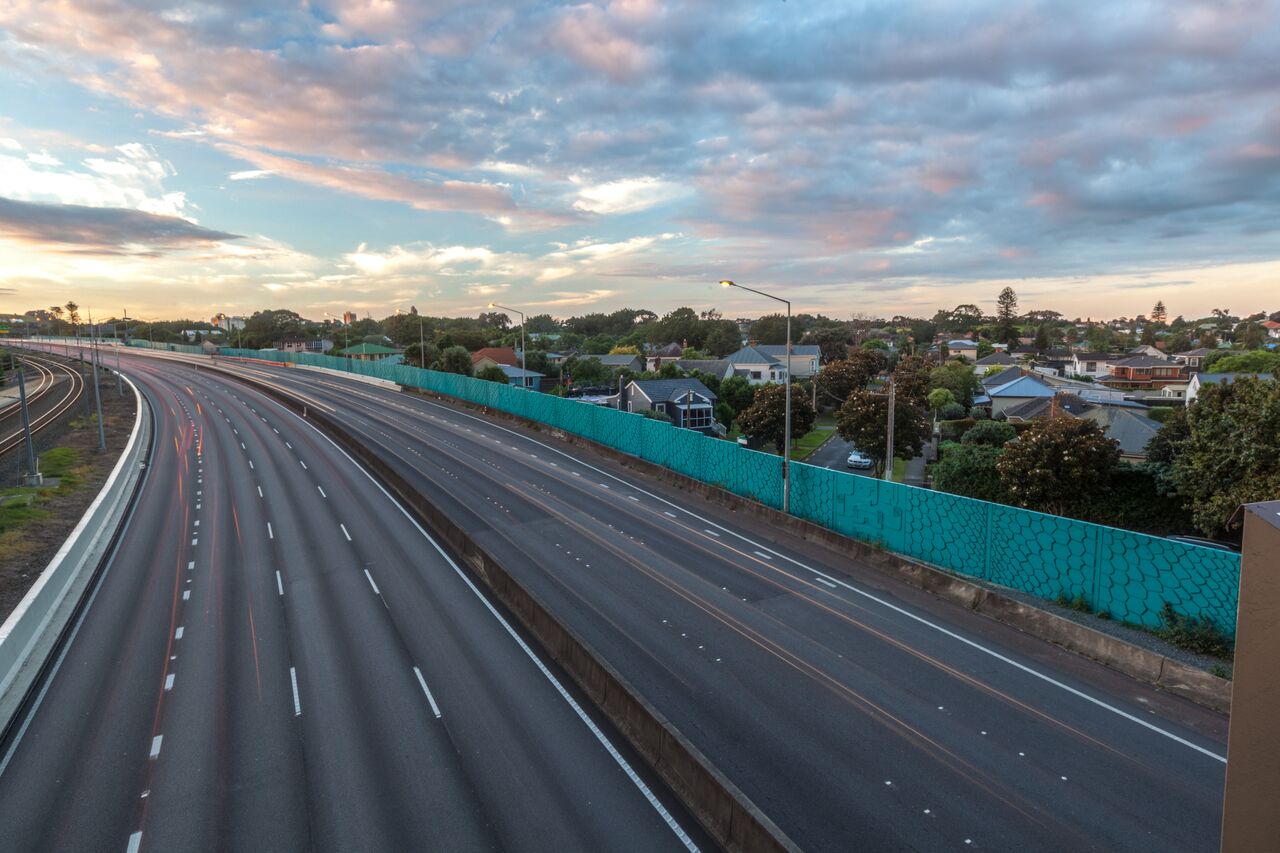Rivers of art guarding residents
When Clynt White from White Landscape and Urbanism was asked to design a noise wall for Auckland’s southern motorway near Ellerslie he was determined his creation would stand out from similar structures.
“We really wanted to move the standard of noise wall design forward,” says White, the landscape architect behind the project. “A key part of that was having Maori artists involved early on to work through the process. So rather than say ‘here’s some walls, put your work on it’, we wanted to get someone on board at the beginning.”
Clynt White was determined his noise wall would stand out.
The result: eye-catching blue/green panels which feature a Maori narrative. The nearly 3km project won White’s company the urban landscape prize in this year’s Firth NZILA “Full of Surprises” design competition.
White worked with the iwi integration group to identify an urban landscape concept. Within that they put a set of principles in place as to how the wall could develop from a functional and aesthetic perspective while still leaving opportunities for an artist’s interpretation.
The iwi integration group helped White identify the concept.
Johnson Witehira was the artist involved. He used the idea of the motorway as an awa (river) because “rivers could be considered as highways for Maori prior to the arrival of Europeans.” Explaining his concept to Idealog, Witehira said “this resulted in the design of a number or waka (canoe) based elements and also the unique colour scheme which uses kahurangi (blue). The blue relates to the water and this idea of the motorway as a river.”
White says another theme is kaitiakitanga (guardianship) to provide protection to nearby residents. That’s represented with the tuatara-like skin pattern on the panels - lizards can represent Whiro (darkness and death) and indicate a need for caution, or convey a message of warning, he said. “These warn travellers to display caution at motorway exits and on-ramps.”
Part of the pattern is inspired by Tuatara skin.
One of the biggest challenges of the project was putting in the foundations. White says the presence of volcanic rock and utilities infrastructure within the construction corridor made it difficult to drive piles down. Instead steel fibre reinforced concrete foundations were used. These had the added benefit of reduced construction time, noise pollution, material and earthworks costs, and an improvement in structural resilience.
Feedback on the design has been positive. In fact it’s had residents further down the motorway lamenting their own unpainted “tacky” concrete barriers. Some told reporters they want “picturesque” panels like the ones at Ellerslie.
The Ellerslie Noise wall is admired by motorists passing by.



